-
 Bitcoin
Bitcoin $114400
0.68% -
 Ethereum
Ethereum $3550
2.48% -
 XRP
XRP $3.001
4.99% -
 Tether USDt
Tether USDt $0.9999
0.01% -
 BNB
BNB $757.6
1.46% -
 Solana
Solana $162.9
1.07% -
 USDC
USDC $0.9998
0.00% -
 TRON
TRON $0.3294
0.91% -
 Dogecoin
Dogecoin $0.2015
2.46% -
 Cardano
Cardano $0.7379
2.01% -
 Stellar
Stellar $0.4141
8.83% -
 Hyperliquid
Hyperliquid $37.83
-1.91% -
 Sui
Sui $3.454
0.76% -
 Chainlink
Chainlink $16.62
3.53% -
 Bitcoin Cash
Bitcoin Cash $554.6
2.84% -
 Hedera
Hedera $0.2486
3.91% -
 Ethena USDe
Ethena USDe $1.001
0.00% -
 Avalanche
Avalanche $21.95
3.34% -
 Toncoin
Toncoin $3.563
-2.85% -
 Litecoin
Litecoin $112.7
2.65% -
 UNUS SED LEO
UNUS SED LEO $8.977
0.13% -
 Shiba Inu
Shiba Inu $0.00001232
1.85% -
 Uniswap
Uniswap $9.319
2.93% -
 Polkadot
Polkadot $3.632
1.38% -
 Monero
Monero $307.2
2.36% -
 Dai
Dai $0.9997
-0.03% -
 Bitget Token
Bitget Token $4.340
0.91% -
 Pepe
Pepe $0.00001048
1.07% -
 Cronos
Cronos $0.1348
3.26% -
 Aave
Aave $261.5
1.93%
How do I transfer funds across chains in Coinbase Wallet?
To transfer assets across blockchains in Coinbase Wallet, ensure your app is updated, verify sufficient funds, and double-check recipient addresses to avoid errors.
Apr 27, 2025 at 06:21 am
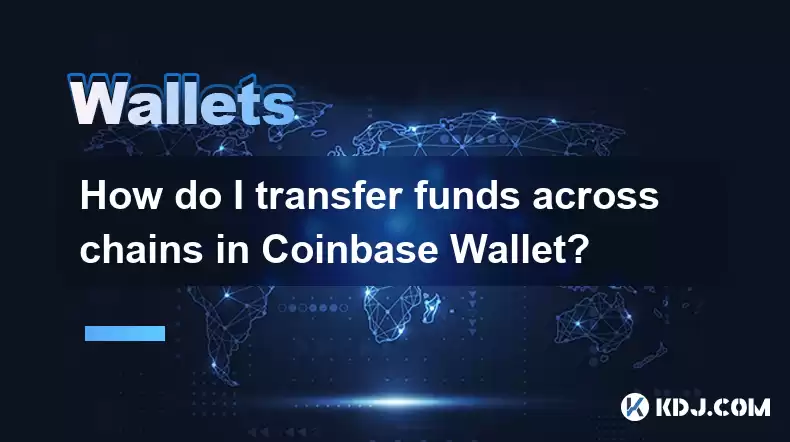
Understanding Cross-Chain Transfers in Coinbase Wallet
Cross-chain transfers are a vital feature in the cryptocurrency ecosystem, allowing users to move their assets from one blockchain to another. Coinbase Wallet, a popular mobile and browser-based wallet, supports this functionality, enabling users to seamlessly transfer their funds across different blockchains. This article will guide you through the process of transferring funds across chains in Coinbase Wallet, ensuring you can manage your assets efficiently and securely.
Preparing for a Cross-Chain Transfer
Before initiating a cross-chain transfer in Coinbase Wallet, it's important to ensure you have the necessary preparations in place. First, make sure your Coinbase Wallet app is updated to the latest version. This ensures you have access to the most recent features and security enhancements. Second, verify that you have sufficient funds in your wallet for the transfer, including any associated fees. Cross-chain transfers often involve network fees, which can vary depending on the blockchains involved.
Additionally, familiarize yourself with the blockchains you are transferring between. Different blockchains have different characteristics, such as transaction speeds and fees. For example, transferring from Ethereum to Polygon may have different considerations than transferring from Bitcoin to Binance Smart Chain. Understanding these nuances will help you make informed decisions during the transfer process.
Initiating a Cross-Chain Transfer in Coinbase Wallet
To begin the cross-chain transfer process in Coinbase Wallet, follow these detailed steps:
- Open the Coinbase Wallet app on your mobile device or access it through the browser extension.
- Navigate to the 'Send' section. This is typically found at the bottom of the app or in the main menu of the browser extension.
- Select the asset you wish to transfer. For example, if you want to transfer Ethereum (ETH) to another blockchain, choose ETH from your list of assets.
- Enter the recipient's address. This is the address on the destination blockchain where you want to send your funds. Ensure you double-check this address to avoid sending funds to the wrong place.
- Specify the amount you want to transfer. Be mindful of the minimum and maximum transfer limits, which can vary depending on the asset and the blockchains involved.
- Choose the destination blockchain. Coinbase Wallet will present you with a list of supported blockchains for the asset you are transferring. Select the appropriate blockchain for your transfer.
- Review the transaction details, including the network fee. Make sure you are comfortable with the fee before proceeding.
- Confirm the transaction. You may be prompted to enter your wallet's password or use biometric authentication to authorize the transfer.
- Wait for the transaction to be processed. The time it takes for the transfer to complete can vary depending on the blockchains involved and network congestion.
Monitoring and Confirming Your Cross-Chain Transfer
After initiating a cross-Chain transfer in Coinbase Wallet, it's crucial to monitor the transaction to ensure it completes successfully. You can track the progress of your transfer within the Coinbase Wallet app. Navigate to the 'Activity' or 'Transactions' section to view the status of your transfer. Here, you will see details such as the transaction hash, which you can use to check the transaction on a blockchain explorer.
Once the transfer is confirmed on the destination blockchain, the funds should appear in your wallet. This confirmation can take anywhere from a few minutes to several hours, depending on the blockchains involved. If you encounter any issues or delays, you can reach out to Coinbase Wallet's support team for assistance.
Common Issues and Troubleshooting
While cross-chain transfers in Coinbase Wallet are generally straightforward, you may encounter some common issues. One frequent problem is incorrect recipient addresses. Always double-check the address before confirming the transfer, as sending funds to the wrong address can result in permanent loss.
Another issue is insufficient funds for network fees. Ensure you have enough of the required cryptocurrency to cover the fees before initiating a transfer. If you don't have enough, you may need to acquire more or choose a different blockchain with lower fees.
Network congestion can also cause delays. During times of high network activity, transactions may take longer to process. In such cases, patience is key, as the transfer will eventually complete once the network clears.
Security Considerations for Cross-Chain Transfers
Security is paramount when conducting cross-chain transfers in Coinbase Wallet. Always use strong, unique passwords for your wallet and enable two-factor authentication (2FA) if available. This adds an extra layer of protection against unauthorized access.
Be cautious of phishing attempts. Scammers may try to trick you into revealing your private keys or wallet passwords. Always access Coinbase Wallet through official channels and never share sensitive information with anyone.
Regularly update your wallet software to benefit from the latest security patches and features. Keeping your wallet up to date helps protect against known vulnerabilities.
Frequently Asked Questions
Q: Can I transfer any cryptocurrency across chains in Coinbase Wallet?
A: Not all cryptocurrencies support cross-chain transfers in Coinbase Wallet. The wallet supports a variety of assets, but the availability of cross-chain transfers depends on the specific cryptocurrency and the blockchains involved. Always check the supported assets and blockchains within the Coinbase Wallet app before attempting a transfer.
Q: Are there any fees associated with cross-chain transfers in Coinbase Wallet?
A: Yes, cross-chain transfers typically involve network fees, which can vary depending on the blockchains involved. These fees are necessary to process the transaction on the respective blockchains. Always review the fee before confirming the transfer to ensure you are comfortable with the cost.
Q: How long does a cross-chain transfer take in Coinbase Wallet?
A: The duration of a cross-chain transfer can vary depending on the blockchains involved and network congestion. Transfers can take anywhere from a few minutes to several hours. You can monitor the progress of your transfer within the Coinbase Wallet app.
Q: What should I do if my cross-chain transfer fails or gets stuck?
A: If your cross-chain transfer fails or gets stuck, first check the transaction status in the Coinbase Wallet app. If the issue persists, you can reach out to Coinbase Wallet's support team for assistance. They can provide guidance on resolving the issue and help ensure your funds are secure.
Disclaimer:info@kdj.com
The information provided is not trading advice. kdj.com does not assume any responsibility for any investments made based on the information provided in this article. Cryptocurrencies are highly volatile and it is highly recommended that you invest with caution after thorough research!
If you believe that the content used on this website infringes your copyright, please contact us immediately (info@kdj.com) and we will delete it promptly.
- Cryptocurrency, Altcoins, and Profit Potential: Navigating the Wild West
- 2025-08-04 14:50:11
- Blue Gold & Crypto: Investing Disruption in Precious Metals
- 2025-08-04 14:30:11
- Japan, Metaplanet, and Bitcoin Acquisition: A New Era of Corporate Treasury?
- 2025-08-04 14:30:11
- Coinbase's Buy Rating & Bitcoin's Bold Future: A Canaccord Genuity Perspective
- 2025-08-04 14:50:11
- Coinbase's Buy Rating Maintained by Rosenblatt Securities: A Deep Dive
- 2025-08-04 14:55:11
- Cryptos, Strategic Choices, High Returns: Navigating the Meme Coin Mania
- 2025-08-04 14:55:11
Related knowledge
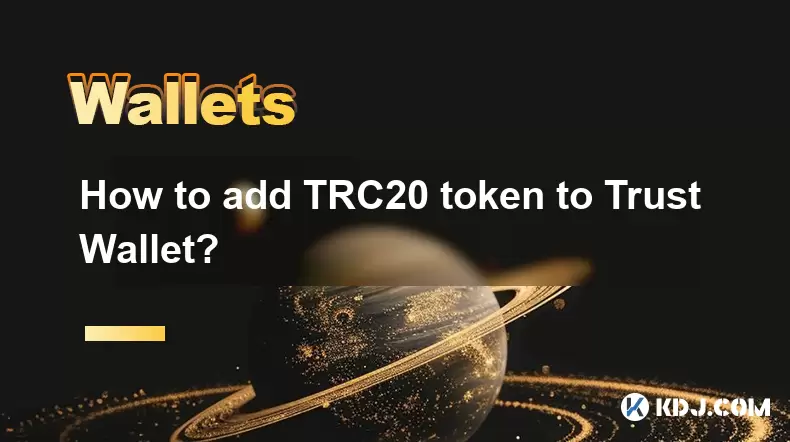
How to add TRC20 token to Trust Wallet?
Aug 04,2025 at 11:35am
Understanding TRC20 and Trust Wallet CompatibilityTrust Wallet is a widely used cryptocurrency wallet that supports multiple blockchain networks, incl...
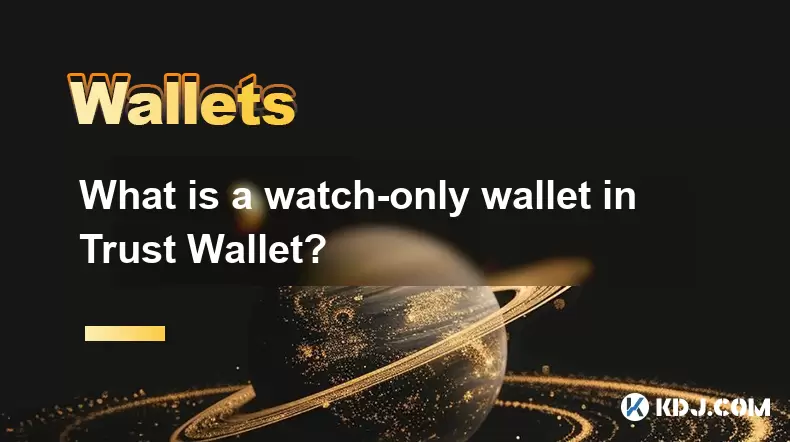
What is a watch-only wallet in Trust Wallet?
Aug 02,2025 at 03:36am
Understanding the Concept of a Watch-Only WalletA watch-only wallet in Trust Wallet allows users to monitor a cryptocurrency address without having ac...
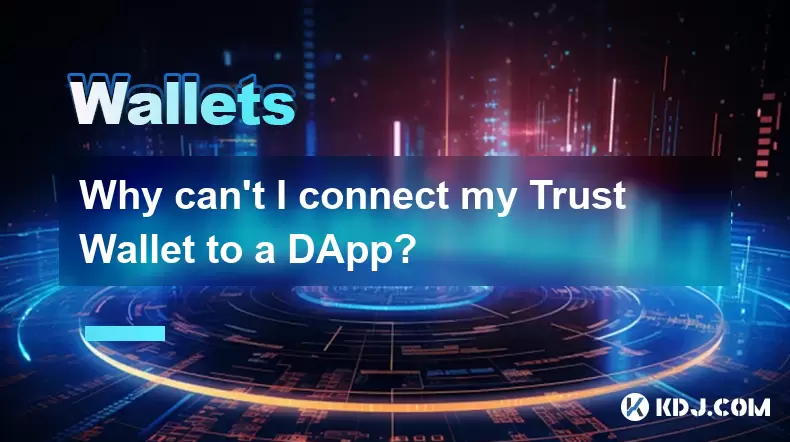
Why can't I connect my Trust Wallet to a DApp?
Aug 04,2025 at 12:00pm
Understanding DApp Connectivity and Trust WalletConnecting your Trust Wallet to a decentralized application (DApp) is a common process in the cryptocu...
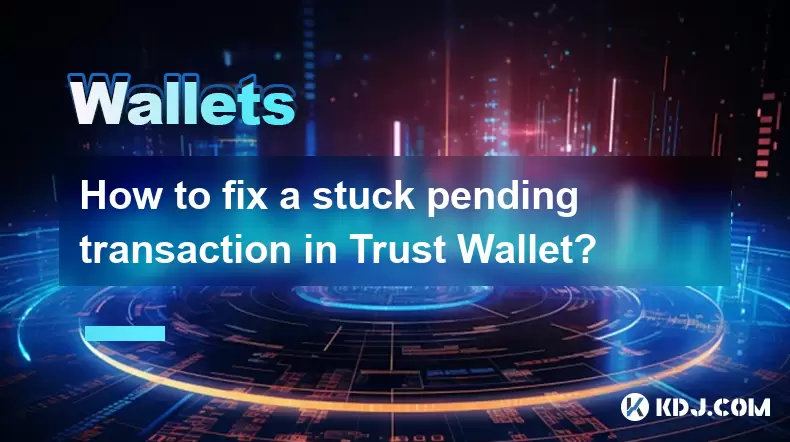
How to fix a stuck pending transaction in Trust Wallet?
Aug 03,2025 at 06:14am
Understanding Why Transactions Get Stuck in Trust WalletWhen using Trust Wallet, users may occasionally encounter a pending transaction that appears t...
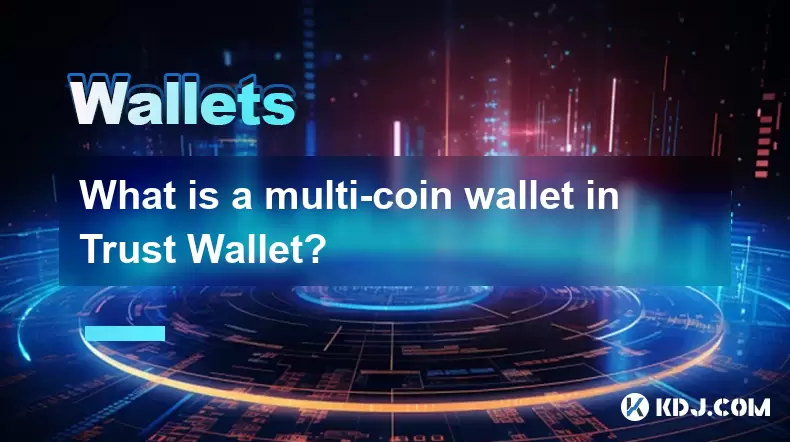
What is a multi-coin wallet in Trust Wallet?
Aug 03,2025 at 04:43am
Understanding Multi-Coin Wallets in Trust WalletA multi-coin wallet in Trust Wallet refers to a digital wallet that supports multiple cryptocurrencies...
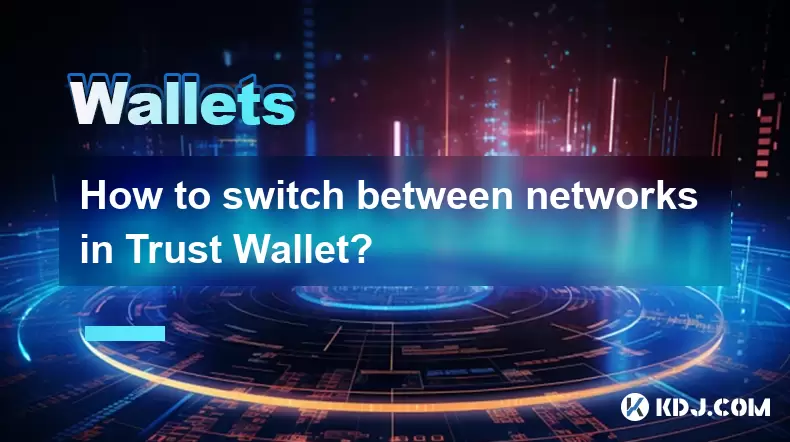
How to switch between networks in Trust Wallet?
Aug 02,2025 at 12:36pm
Understanding Network Switching in Trust WalletSwitching between networks in Trust Wallet allows users to manage assets across different blockchains s...

How to add TRC20 token to Trust Wallet?
Aug 04,2025 at 11:35am
Understanding TRC20 and Trust Wallet CompatibilityTrust Wallet is a widely used cryptocurrency wallet that supports multiple blockchain networks, incl...

What is a watch-only wallet in Trust Wallet?
Aug 02,2025 at 03:36am
Understanding the Concept of a Watch-Only WalletA watch-only wallet in Trust Wallet allows users to monitor a cryptocurrency address without having ac...

Why can't I connect my Trust Wallet to a DApp?
Aug 04,2025 at 12:00pm
Understanding DApp Connectivity and Trust WalletConnecting your Trust Wallet to a decentralized application (DApp) is a common process in the cryptocu...

How to fix a stuck pending transaction in Trust Wallet?
Aug 03,2025 at 06:14am
Understanding Why Transactions Get Stuck in Trust WalletWhen using Trust Wallet, users may occasionally encounter a pending transaction that appears t...

What is a multi-coin wallet in Trust Wallet?
Aug 03,2025 at 04:43am
Understanding Multi-Coin Wallets in Trust WalletA multi-coin wallet in Trust Wallet refers to a digital wallet that supports multiple cryptocurrencies...

How to switch between networks in Trust Wallet?
Aug 02,2025 at 12:36pm
Understanding Network Switching in Trust WalletSwitching between networks in Trust Wallet allows users to manage assets across different blockchains s...
See all articles

























































































